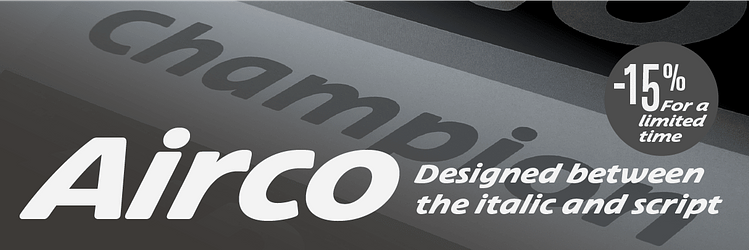Arbale
About
Modern. Universal. Vernacular.
Arbale is a geometric sans serif available in three tones: Modern, Universal and Vernacular. This typeface has been designed to meet both the need to bring style and a strong identity to graphic design projects in which it will be used, while remaining perfectly acceptable as a text typeface.
The influences of Arbale
Around 1925-30, we have witnessed a wave of research initiated by Josef Albers, Herbert Bayer, Jan Tschichold, Paul Renner, Rudolf Koch, Adolphe Mouron Cassandre who – each in their own way – tried to reconsider the idea of a simplified alphabet, cleaned of its calligraphic references. A reaction to previous periods such as the Arts & Craft, Art Nouveau movements, which glorified the trace, curve, handwriting, and a certain visual complexity.
This quest for absoluteness is not new. See the geometric re-constructions of the Roman capital by Albrecht Durer in 1525,1 or the plates of the commission Bignon in 16932 that defined Romain du Roi.
Nevertheless, in the 1920s, under the influence of Walter Gropius’ Bauhaus, it was a question of going further, inventing “modern” forms as part of a movement for a “New Typography”. And to use geometry as a rational way to design an ideal shape, advertised as universal. Some added a linguistic dimension with a desire to remove the capitals seen as elements establishing an unnecessary hierarchy.
Of course, as soon as you draw and use typefaces, the idea of designing a typeface strictly derived from geometry immediately confronts the very principle of typography. The typefaces used to set text require a lot of optical corrections, in order to obtain an essential harmony for a certain reading comfort, if not a visual coherence between typographical forms, different from each other.
Arbale, hybrid typeface
This is where Arbale enters the scene. It could be defined as geometric sans serif. It doesn’t come from a revival of a particular reference. It’s an hybrid typeface that brings together various modernist influences and vernacular lettering of geometric inspiration from the 20th century. It is designed in three atmospheres, the Modern version by default, the Universal version and the Vernacular version. With these three versions in the same font, every styles, the user will necessarily find something to meet his artistic direction needs. Everything is quite easy to access via OpenType features. In addition, a few additional OpenType features allow new combinations.
The name Arbale is a shortcut to the word “arbalète” (crossbow). The crossbow by its precision in its use and its construction an an arc of a circle represents the idea of typeface. It turns out that more recently, we’ve learned that this name is also the one of a village in Algeria which was the site of a Roman city in the Mauretania Caesarian province. It’s also a name that allows you to visualize different atmospheres.
Arbale Modern *
Some will immediately notice the r and t that take up the idea of the first Futura by Paul Renner.3 The a may be seen as a synthesis between the a of the first Futura and Vista.4 The e is clearly influenced by Kabel, as one of the variants of the 2 and 3, already present in some members of the AW Conqueror typeface family. The J, j angular like the U, u are influenced by the posters of Kurt Schwitters and Herbert Bayer,5 the straight descender on Y refers to both Vibert and Ambroise, and AW Conqueror Sans. Capitals are mostly influenced by poster lettering, just like Aiglon.
* Arbal Modern is the default version, directly accessible; we call it like this in order to differentiate it from others, but it doesn’t need a specific name and access via OpenType features in the fonts.
Arbale Universal
The Universal version is the result of a dosage between the research of Herbert Bayer for his Universal alphabet,6 [Jan Tschichold for his Single alphabet,7 or even Cassandre each of whom tried to redefine an alphabet that alone would replace capital and lowercase; as well as AW Conqueror Inline which explores some lettering visible in American Diners. Simplified round shapes are clearly influenced by Herbert Bayer work, unlike the “caricatural” ITC Bauhaus, the idea here is to limit the systematic aspect if used everywhere. That’s why the b and q are rounded, but not the d and p. In the same way, the m is round, but the n is a shape inspired of Jan Tschichold’s Peignot and Single alphabet, just like the t. The E, e could make you think of some versions of the first Futura.
Arbale Vernacular
The Vernacular version takes over the thread started with Anisette in 1996 followed by Nespresso corporate typeface8 project in 2014. It is a question of regaining the spirit of vernacular lettering seen in posters, or lettering in the city during the 20th century. The J and N take up the lettering, like the Y or the rather unusual x, takes up that of Herbert Bayer’s Universal alphabet; but which remains functional when associated with g and a and their short endings.
To conclude, Arbale is a tasty mixture, methodically dosed, so that its different OpenType sets bring different tones to the graphic compositions.















